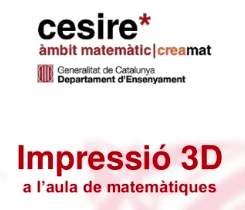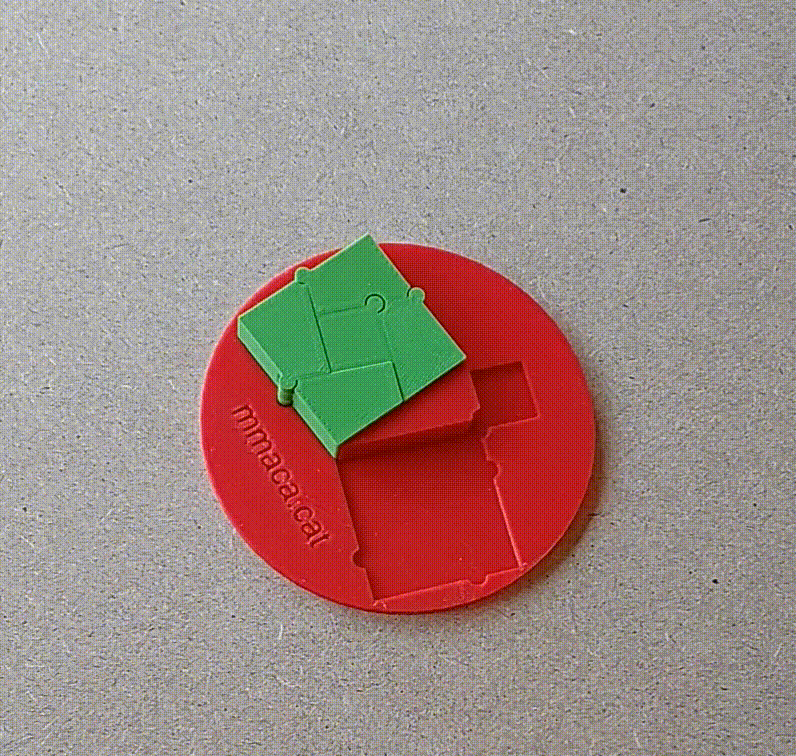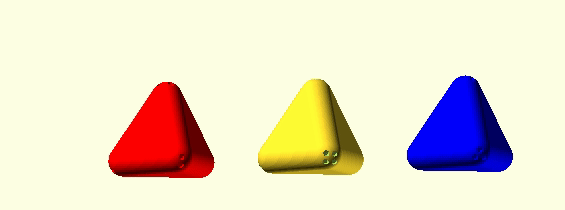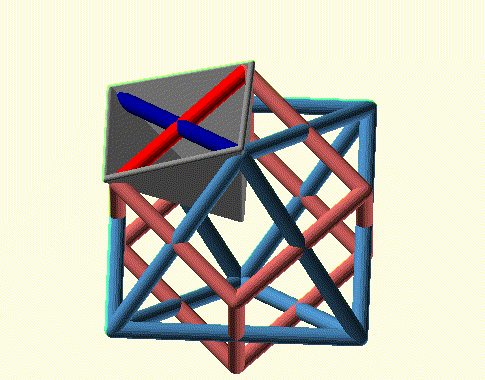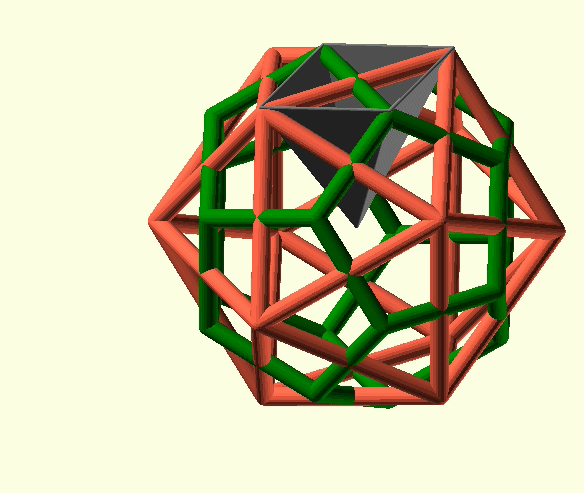Mathematical objects made of 3D printing.
3D printers are no longer a foreign object in schools and institutes, allowing them to manufacture with great precision, geometric objects, games, tangrams or puzzles.
They are an opportunity to enrich the didactic collections of the centers and at the same time allow to physically carry out works and projects of the students.
We collect on this page, the objects created by us. You can freely download the files and print them.
SCAD files are used by free openscad 3D modeling software. They allow the modification and personalization of the model.
STL files are a standard used by all 3D printers. In fact, they are a text file with the list of triangles of the three-dimensional triangular network that forms the surface of the object.
Archimedes Cup
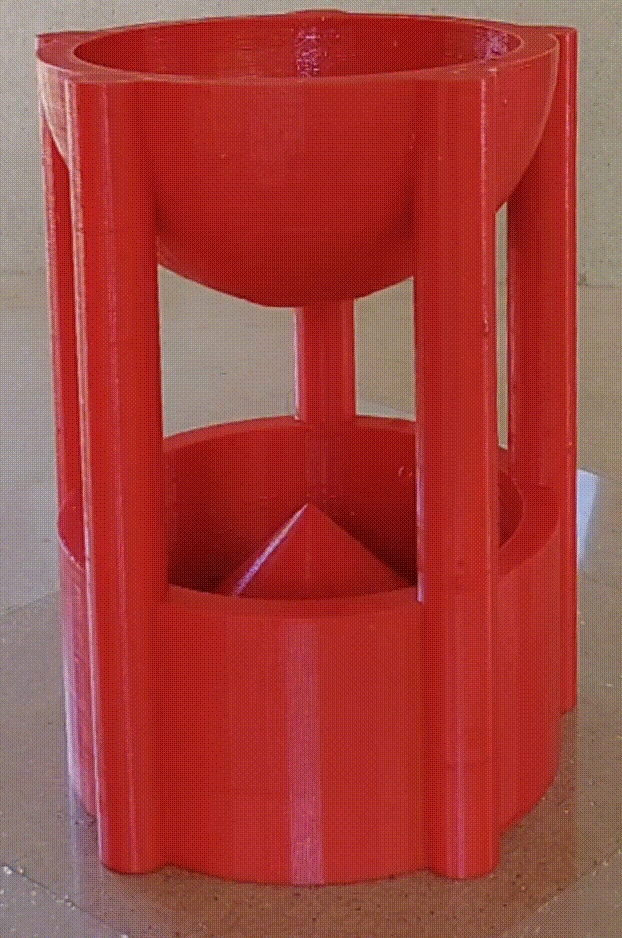
This cup allows to check how the water that fills the top (half sphere), also fills exactly the space between the cylinder and the cone at the bottom.
Because the cone volume is one-third of the volume of the cylinder, this space is 2/3·R³
The volume of the sphere is therefore double, as indicated by its well-known formula 4/3·R³
The two dual tetraetraeres of the Kaleidoscope 3-3-3-3
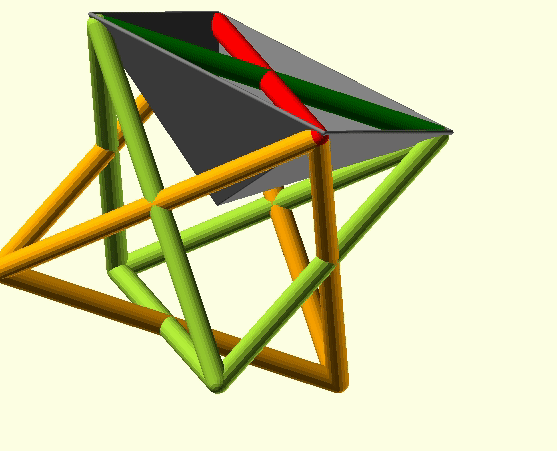
This is a materialization of the virtual image obtained by putting two perpendicular pieces (red and green) on the kaleidoscope 3-3-3-3 .
They are the two dual tetraahs of each other that form the octangle star or stella octangula
The rhombotic dodecaedre and the cubooctahedre of the kaleidoscope 3-5-3-5
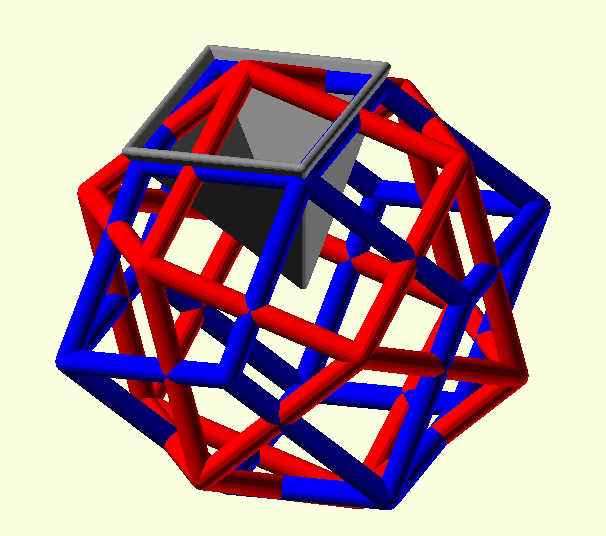
This is a materialization of the virtual image that is obtained by putting two pieces (red and blue) on the kaleidoscope 3-5-3-5 .
It is the rhombobic dodecaedron (blue) and the cubooctahedron (red). They are dual to each other, their edges are perpendicular. Since they are not regular polyheders, the intersection of the edges is not at its midpoint.

